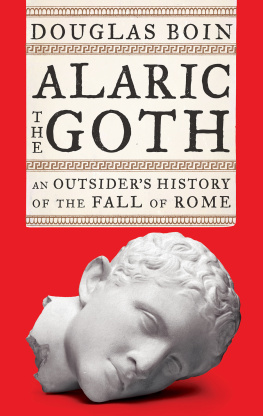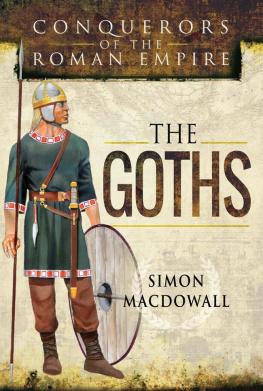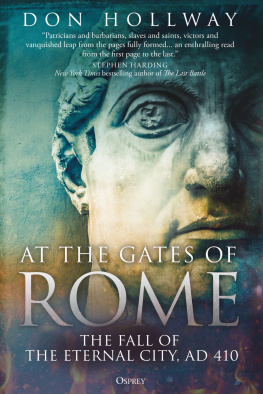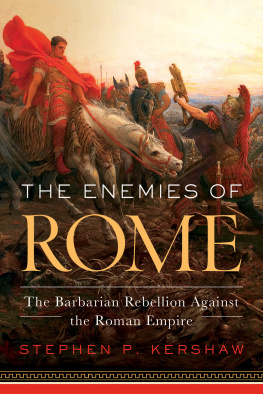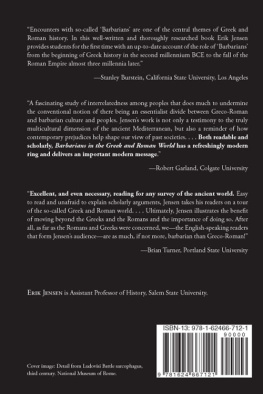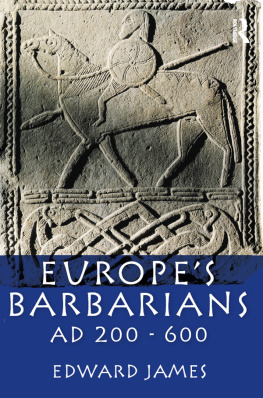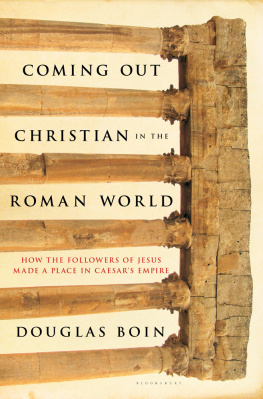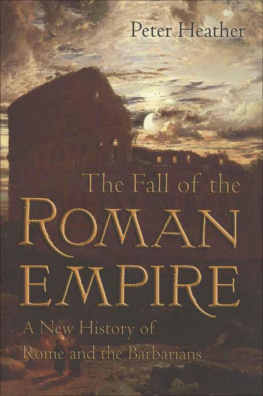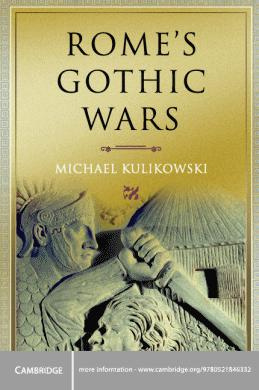
ALARIC
the
GOTH

AN OUTSIDERS HISTORY
of
THE FALL OF ROME

Douglas Boin

W.W. NORTON & COMPANY
Independent Publishers Since 1923
A talented immigrant is denied citizenship by an unjust empire and, in retaliation, unleashes a surprise attack on one of its beloved cultural capitals, Rome. His journey from ambitious boy to disillusioned adult takes four decades. But by the time he dies, in the fifth century A.D., he will be remembered as the foreigner who forced the most powerful politicians of his day to think twice about who they called a barbarian. He changed history, and yet his version of it has never been told. His name was Alaric, and this is his story.
Born at the river that divided two lands, he survived a border policy that separated immigrant children from their families, saw lightning success as a soldier, and became the widely respected leader of his people, the Goths. He also watched as his dream of achieving the basic dignity of citizenship slipped away during a time of political paralysisa frustration that turned him into a champion for his people and an enemy of the Roman Empire.
Time has not looked kindly on what he and the Goths wrought. From the medieval period to today, each new trend that departed in some way from societys norms has been stigmatized with the Gothic name. Haunting architecture, disturbing horror stories, and an intimidating blackletter typeface acquired the adjective from hostile critics. A reclusive post-punk sound celebrates its moodiness, as does a modern subculture that embraces the dark, gloomy, and macabre. If being called Roman has always been considered traditional or classic, to be Gothic is different and usually a bit barbaric.
As a historian, Ive always been fascinated by the origins of stereotypes and gross generalizations. The use of derogatory words and insensitive imagery excludes many people from the full life of a community, relegating their stories to the margins of their time and erasing them from later generations. Theres something deeply unsettling in watching how the reputation of an entire group can be so effortlessly, insidiously caricatured, and Ive long suspected that the Goths name was distorted in similar ways.
Contrary to what the Romans believed, the Goths did succeed in making lasting contributions to world history. They established legal customs that shaped the histories of modern Spain, Portugal, France, and Italy. In their fight for human decency, they torched the bigotry that lay at the heart of antiquated notions of citizenship. And in an eerily prescient way, they championed the values of religious tolerance when many Christians at the time pursued heretics, imposed draconian moral laws on society, and outlawed the freedom of religious expression.
The public record of Alarics life is frustratingly thin. Whole decades of his existence have simply vanished, and what little we do know about him comes to us secondhand. But for the past four years, I gathered every scrap of evidence that could tell me about him or his family, every artifact that could bring me closer to his time: from manuscripts brushed with sparkling ink to butchered rabbit bones, the leftovers from a Gothic dinner.
Much of what survives comes from the lives of people who likely never expected to find themselves in the pages of a history book: an elderly widow who lived alone in her mansion, a little girl sold into slavery, a farmers son who rose briefly to emperor. Sometimes these individuals are known only by a single name: Marcella, Passia, Maximinus. They may not seem like natural or helpful starting points for investigating Alarics life. But we can learn a lot from their experiences.
We can reconstruct the story of how Alarics family settled at the frontier and, with the aid of archaeology, see how a Gothic boy spent his days at the border. We can say when young Alaric enlisted in the army and why. We can even recount in remarkable detail the political intrigue of fourth-century Rome. From this collection of odds and ends, we steal a glimpse of a real person. From the rich context of the time emerges an impression of Alaric and, with it, a world we thought we knew but never imagined from his perspective.
Alaric and his people were not the only ones living on the Roman Empires margins during the fourth and fifth centuries. Some of these other foreigners are infamous and still frightening. The Vandals, on their march from northern Europe to their new home in North Africa, left a trail of destruction synonymous with their name. Other groups sound familiar because of their leaders. Attila, from the steppes of central Asia, is probably the most recognizable of the people known as the Huns. But it was the Goths, led by Alaric, who masterminded the most devastating assault against the city of Rome in its more than thousand-year existence. Their story intrigued me the most.
For centuries, the Goths in the Danube valley reaped the benefit of close contact with their neighbors. Yet Romes border had always been a contested place, one where open hostility flared and xenophobia festered. Alaric himself hailed from beyond the Danube River in what constituted one of the northeastern frontiers of the Roman Empire. Although the people from this area are often called Visigoths as a way to distinguish them from the Ostrogoths, who came to rule Italy, no such division existed in Alarics time. That distinction was invented later. Even the backstory to Alarics title, king, is more complicated. The word was the cry of his adoring fans, not a formal proclamation that came with scepter and throne.
Alaric himself chose at a young age to enlist in the army, perhaps to further his career. He succeeded marvelously. Becoming a trusted soldier who served on the battlefield with a revolutionary emperor, he bridged two worlds and spoke two languagesthat of his fellow soldiers and the language of power, Romes. These tools and talents helped him move up the ranks, tantalizing him with the hope of a lucrative government salary in the growing center of politics and diplomacy, the eastern capital of Constantinople. Alarics view of his adopted land soured at the end of the fourth century as rampant bigotry in Roman cities, combined with a lackluster commitment on the emperors part to reward the Goths for their service, radicalized him. By the turn of the fifth century, he had convinced his followers to exact revenge.
The anatomy of his plot to attack Rome unfolds against the backdrop of some of the most significant events in world history: the rise of Christianity, the growth of the Persian Empire, and the crumbling of a once-united Mediterranean. Theres a darker history here, too, as fanatical Christians stoked the flames of civil war and turned the Roman Empire into one of historys first Christian states. In the wake of their triumph, they interpreted Alarics three-day siege as a sign of the end of days and, with the help of Scripture, transformed seventy-two hours in Rome into a narrative of a disaster of biblical proportions. Within decades, they had weaponized fearof another catastrophe, of foreignersto resist their rapidly changing world, while the only political order they ever knew tilted away from Rome and toward new global horizons.
Next page
